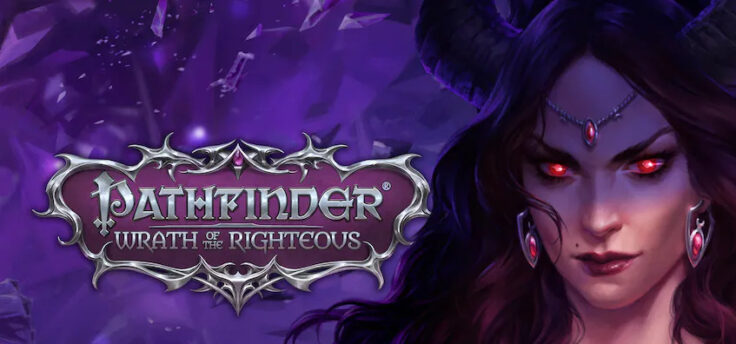Buckle in for some tasty, expansive CRPG and tabletop-inspired gameplay.
Type: Single-player
Genre: RPG
Developer: Owlcat Games
Publisher: META Publishing,
Owlcat Games
Release date: Sep 2, 2021


Intro
Tabletop games are really getting a resurgence in the last handful of years. I’ve been into them since I was young, spurred along in my passions by a father almost as nerdy as I’ve grown into. D&D was always my bread and butter, and I even ran a 3 year campaign in D&D 5th edition. Pathfinder is a system I’m a touch less familiar with, though I’ve dabbled in a handful of sessions in the first edition of it on and off for years. It’s a touch less easy to pick up than some tabletops can be, though the core tenets are familiar- since Pathfinder was spawned from the skeleton of D&D to begin with.
My impression of Pathfinder each time I played, and one that I believe holds true to this game as well, is that there is *so very much to do, to see, to read, and to experience*. This game is a lot, and for full transparency’s sake I must admit that I have not, upon writing this, beaten the main story in the game. I’ve gotten deep enough to grasp mechanics, examine systems, determine opinions on NPC’s, try out a few side quests and main quests, and even find a few bugs- but this is a game requiring quite a lot of time and dedication to finish.
I like it enough to want to finish it, and to be profoundly curious about many of the potential outcomes for major choices present.

Story
Rest assured, I will do my best to include no spoilers or solid information past the initial tutorial and opening area in this review. In a game where choices and story beats are so hefty, this is really the only way to go.
Know that I don’t mean this in a negative connotation, but the game’s initial premise is standard, fantasy tabletop fare. You create a hero from top to bottom, choosing race, appearance, class, stats, traits, and name, and then proceed. It shouldn’t defy all reason for me to say, preemptively, that we’re playing the de facto “hero” of the fantasy story. The initial setting is at a festival, and your character immediately gets brought in on a gurney. There’ve been demons attacking, and while the player character has survived, they’re in a bad way. When awakened, our hero is introduced to a woman in statement armour who is a dragon in human form. While this is, again, standard fantasy, it’s also cool as hell.
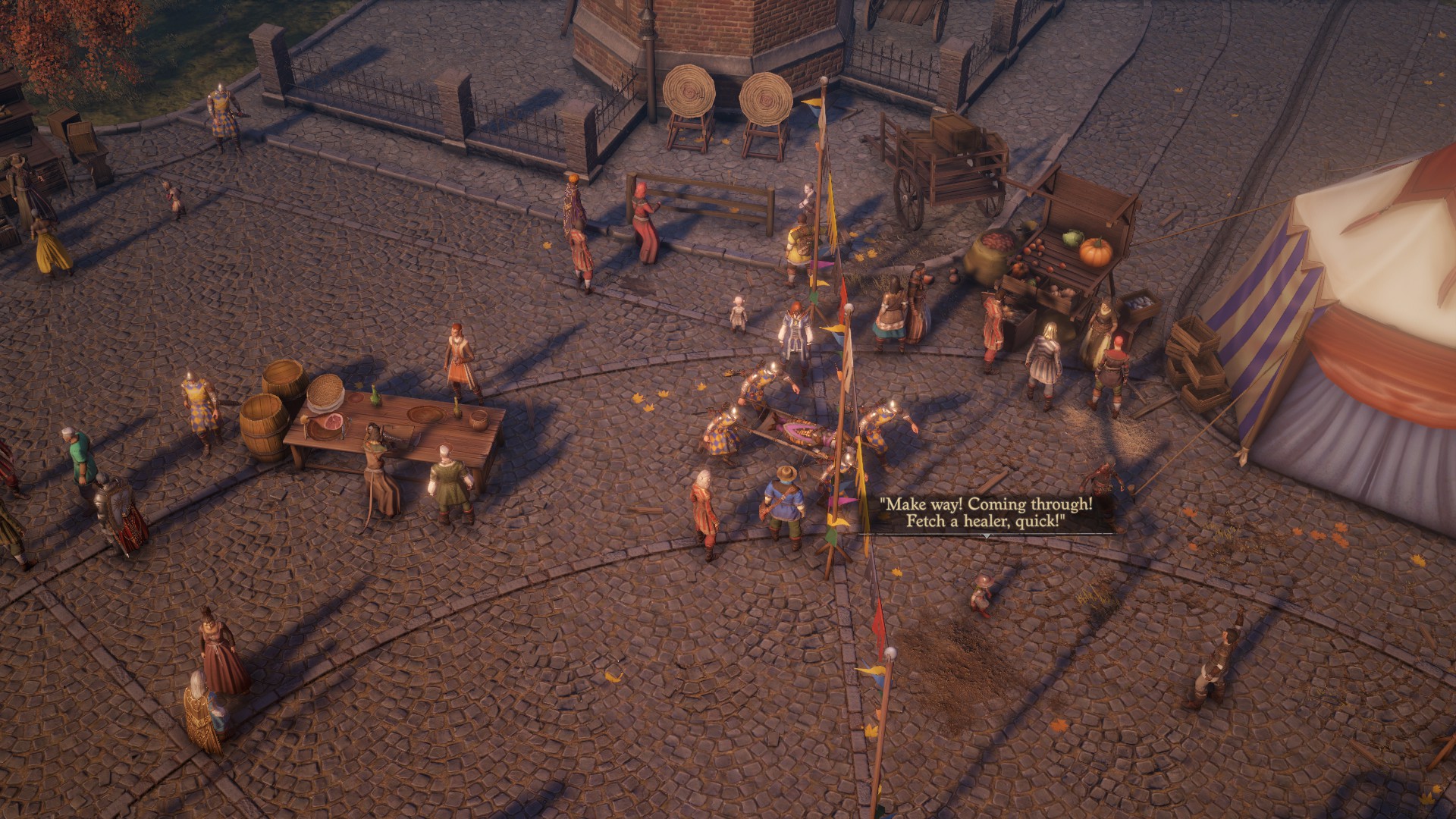
Then, the game does something unexpected. It’s not a far jump to imagine the main character won’t get a truly fun time at a jovial gathering without an interruption, but the interruption that does shatter the peace is immense.
From there, our hero’s journey progresses. We learn of the Wardstone- a magical, rock pillar enchanted with the goddess Iomedae’s light (through an angelic assistant) to help drive away demons- has been compromised. Somehow, the demons (and also devils, if you know a succubus as a devil rather than a demon like I do), managed to turn even that blessed stone. This has, of course, opened up a path for demons to get through from the worldwound, a place demons can get through into the realm to begin various degrees of manipulation and pillaging. This crack is apparently grand enough that even a Demon Lord can get through, which allows hell- in a literal sense- to descend upon that gathering.
It’s a good thing the Main Character is there, to begin a grand journey under ground and begin to find a way to deal with the unholy beings pouring in throughout the land.
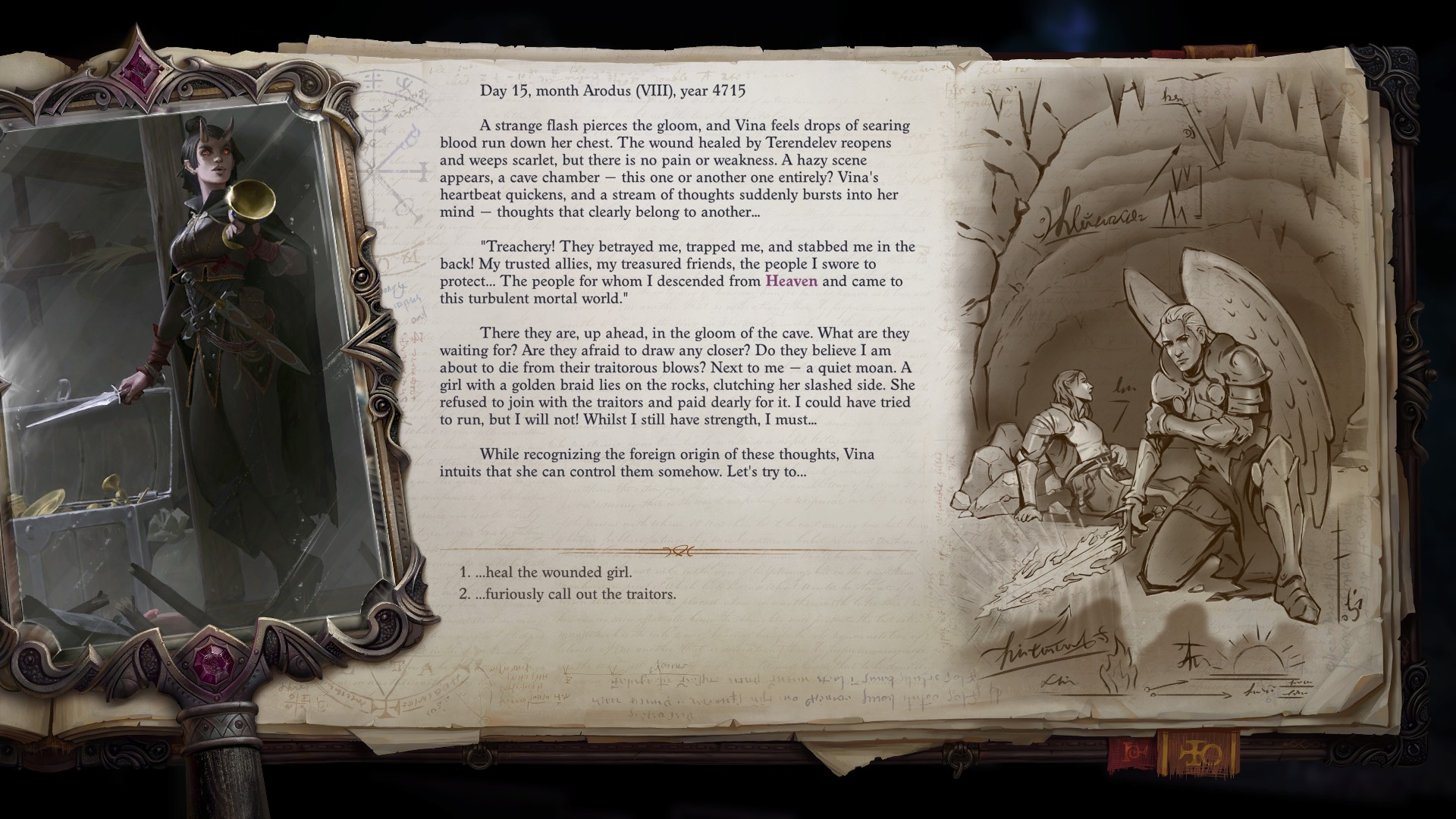
While the bones of the game might be standard fantasy trope fare here and there, it doesn’t make the narrative any less enjoyable. Which is good, because there’s just so damn much of it. If you’re someone who likes to actually try to sit down and read everything, (though that’s not a testament to how much you absorb, like me) then you’re in for quite the time. Every character has something to say, though main NPC’s and ones related to quests are the sorts your character will actually be able to ask questions of.
What alignment do you want to play? You’re able to choose responses to shift the way your character’s morals sit, and this is all done through conversation with other characters. Do you value freedom? Do you want to protect people regardless of law? Do you believe rules should never be broken? These alignment questions are asked decently regularly, and it’s fun to look at the spread of the questions- as well as the way that NPC’s react to different answers. While these decisions are generally of less consequence than some major thematic beats and choices, they were some of my favourites. They act as a lovely way to really immerse yourself in the world, as well as experiencing things through the eyes of your character. They’re the chosen one, after all, and the most important person in this world because of it.
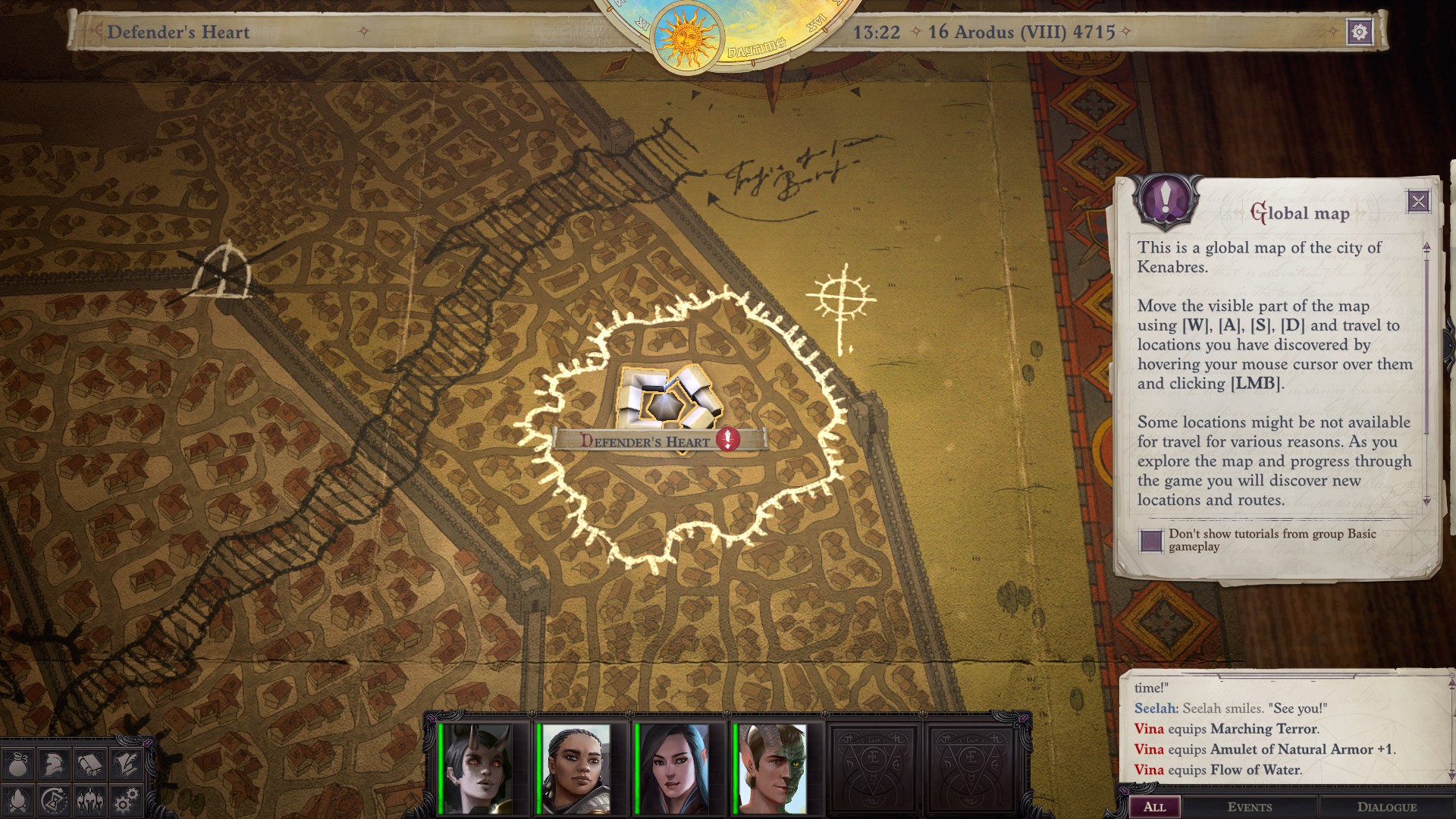
Is that self-centered?
As someone who likes to interact with almost anything in an area before going on, the story is something I absorbed not only by conversation, but also by picking up everything I came across, and doing as many quests as I can. It’s not hard to pick up tons of quests in this game, and sometimes they slap you in the face before you’re able to even properly read the associated text. It wasn’t something that troubled me too much, as this is another great way to get immersed, and to find some favourite party members or characters in the narrative.
What I will say is that I, on occasion, found myself overwhelmed. With so much to do, and so much to see- well, it can make an ADHD-addled mind like mine have a difficult time focusing. Once I did, though, something about the game really just clicked.
Graphics
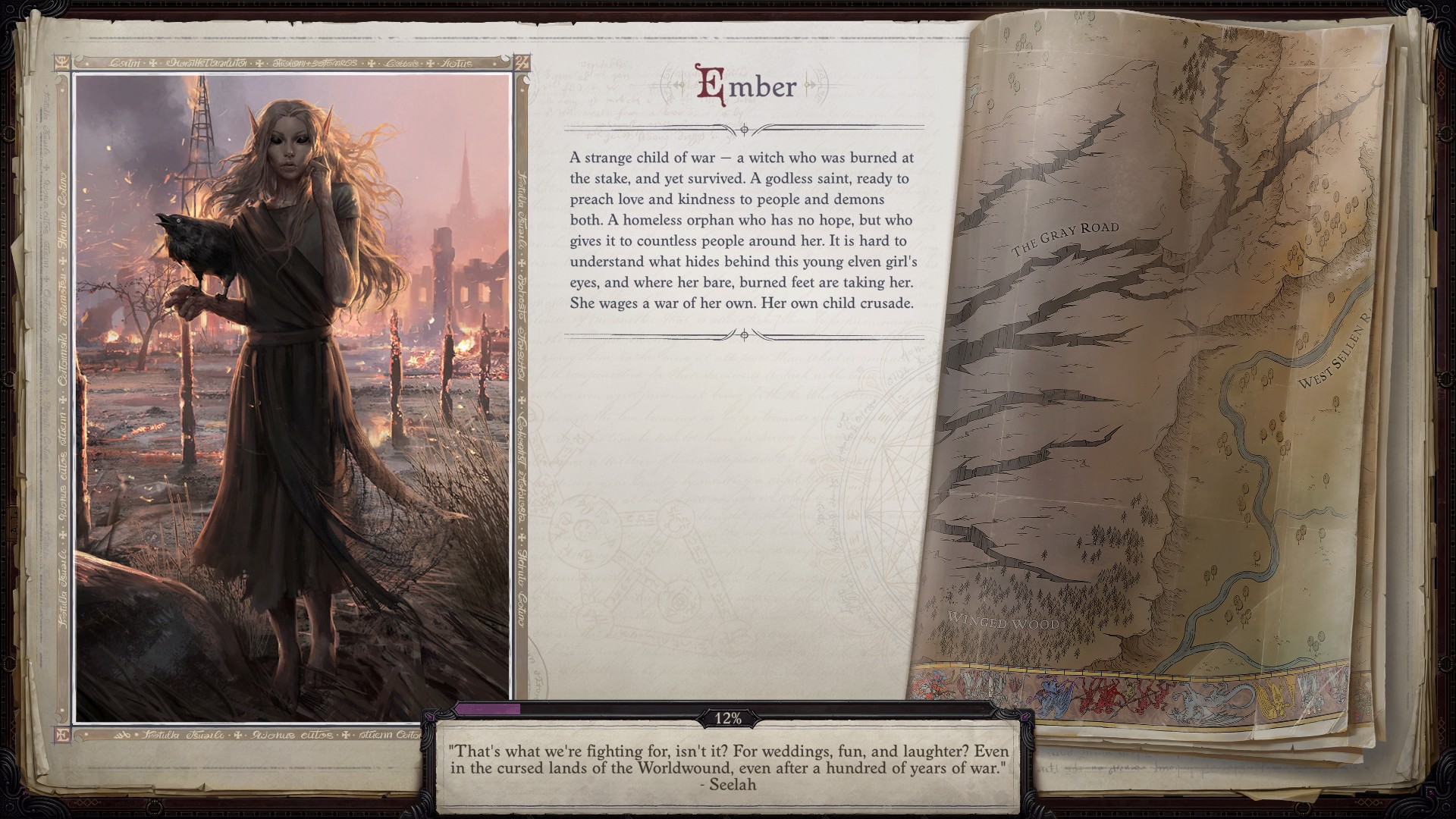
The portraits for the characters are phenomenal. Even at the beginning of the game in character creation, when looking through portraits that will display whenever your character speaks, the hand-painted art is astounding. It’s the sort one might find in an illustrated novel, or perhaps lovingly rendered in an actual tabletop roleplaying book, and I paused to look at each image individually before selecting mine.
In-game graphics differ, of course, but I enjoy them quite a bit. Terrains are distinct for the most part, especially in major map areas. The map itself is easy to navigate, something I appreciate greatly as someone who is directionally challenged. Another thing that excited me was weather! The first time it poured rain in game, I immediately took a screenshot. Enemy models are unique enough to set them apart, and text above the heads of opponents usually lets you know who you should prioritize. Hint: it’s always someone that could heal or summon. Always! Take them out first!
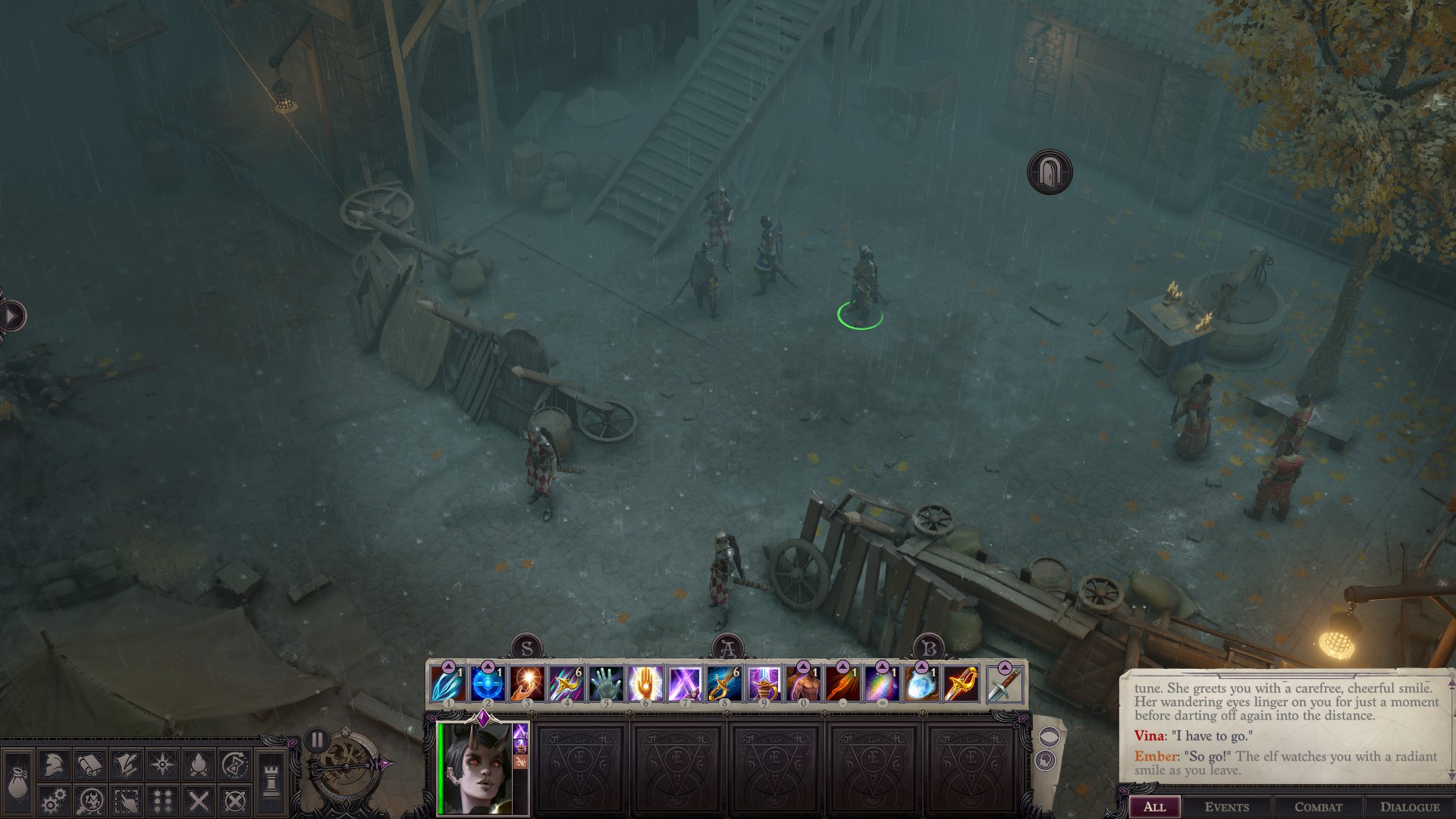
There are also periods throughout the game when major decisions and narratives take place that are monochromatic. The background is the colour of a weathered old book, and the visuals look like something out of a comic book- lined, hatched, and detailed. These static images were some of my favourite, and rife with text and oftentimes important character decisions, the stark contrasts of visuals really popped. It was a smart decision to separate these narrative moments this way, and I screenshotted most of the stills, looking over the details.

Gameplay
Here it is, the meat and potatoes of CRPG. Nowadays, a CRPG is defined by the idea that there is character creation, narrative decisions, party dynamics, exploration, and so on. Many popular CRPG’s nowadays do their best to try to emulate TTRPG’s, and Pathfinder: Wrath of the Righteous is no exception. I consider myself a lover of RPG’s, particularly ones that try to harken back to a particularly nerdy sort of source material- and WOTR is one of the most by-the-book sorts of CRPG’s I’ve ever played.

Confession time: character creation alone took me nearly two hours. It’s hard to make decisions when there’s so many options available, and with 25 classes alone, the customization options are meaty. Initially, I rolled up a Tiefling Bloodrager, determined to try a more melee-focused class than my normal caster-leaning fare.
I gave up on this after a bit, and changed my character’s class. If you’d like to do this as well to swap on a whim, then there’s an option to enable “character retrain” in the difficulty section of your options menu. I highly recommend this, especially if you’re someone who may want to try at least a handful of the classes available in the game.
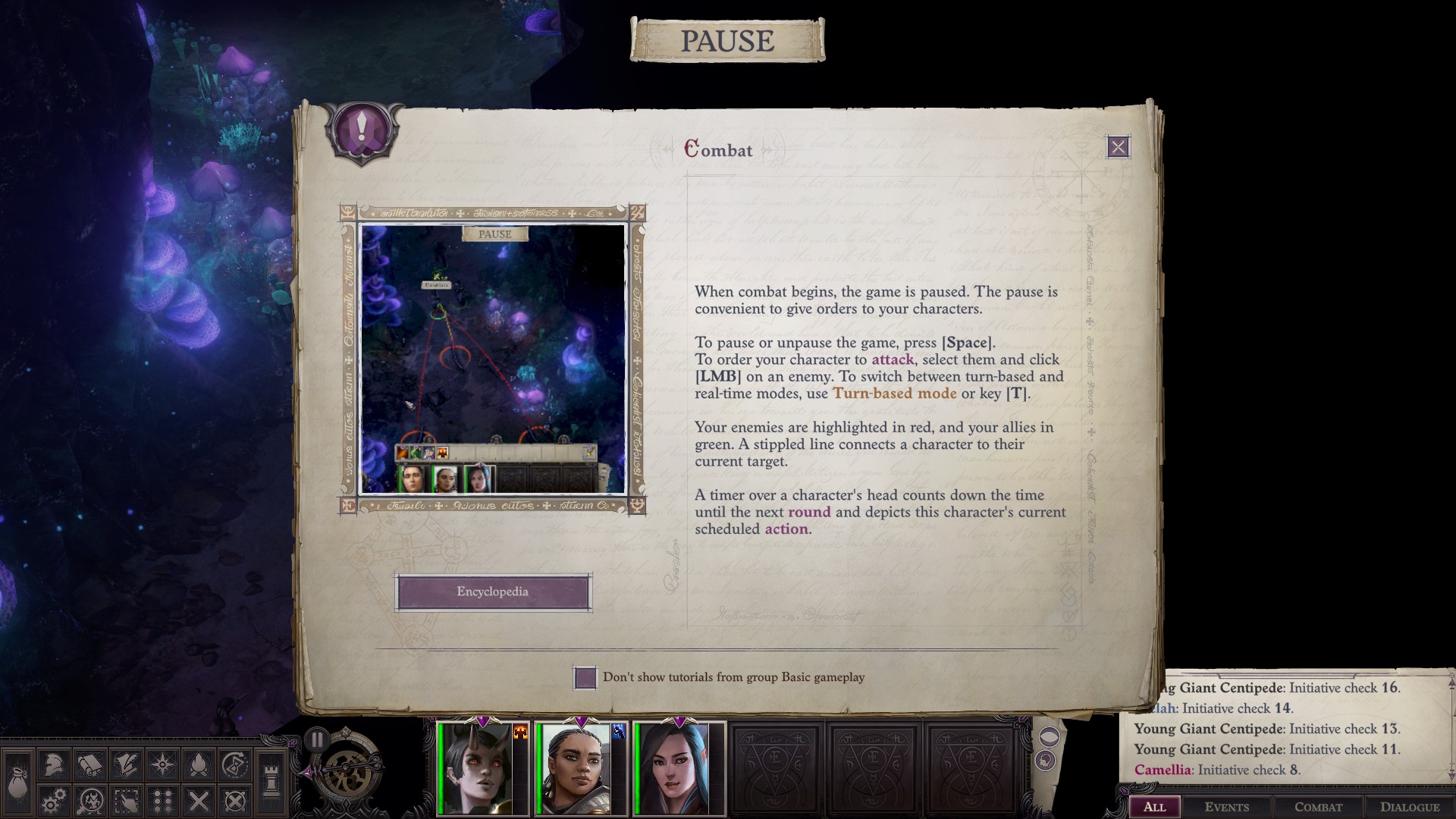
Combat can roll out either in a real-time style (where you can pause intermittently), or in turn-based mode. While both are enjoyable in their own right, especially if you like turn based games, I played things out in real-time almost the entire way through. Depending on how you set your difficulty and your party dynamic, fights can sometimes be pretty damn quick this way, which gives you a lot more time to try to digest the eleven-course-meal-that-is-the-plot.
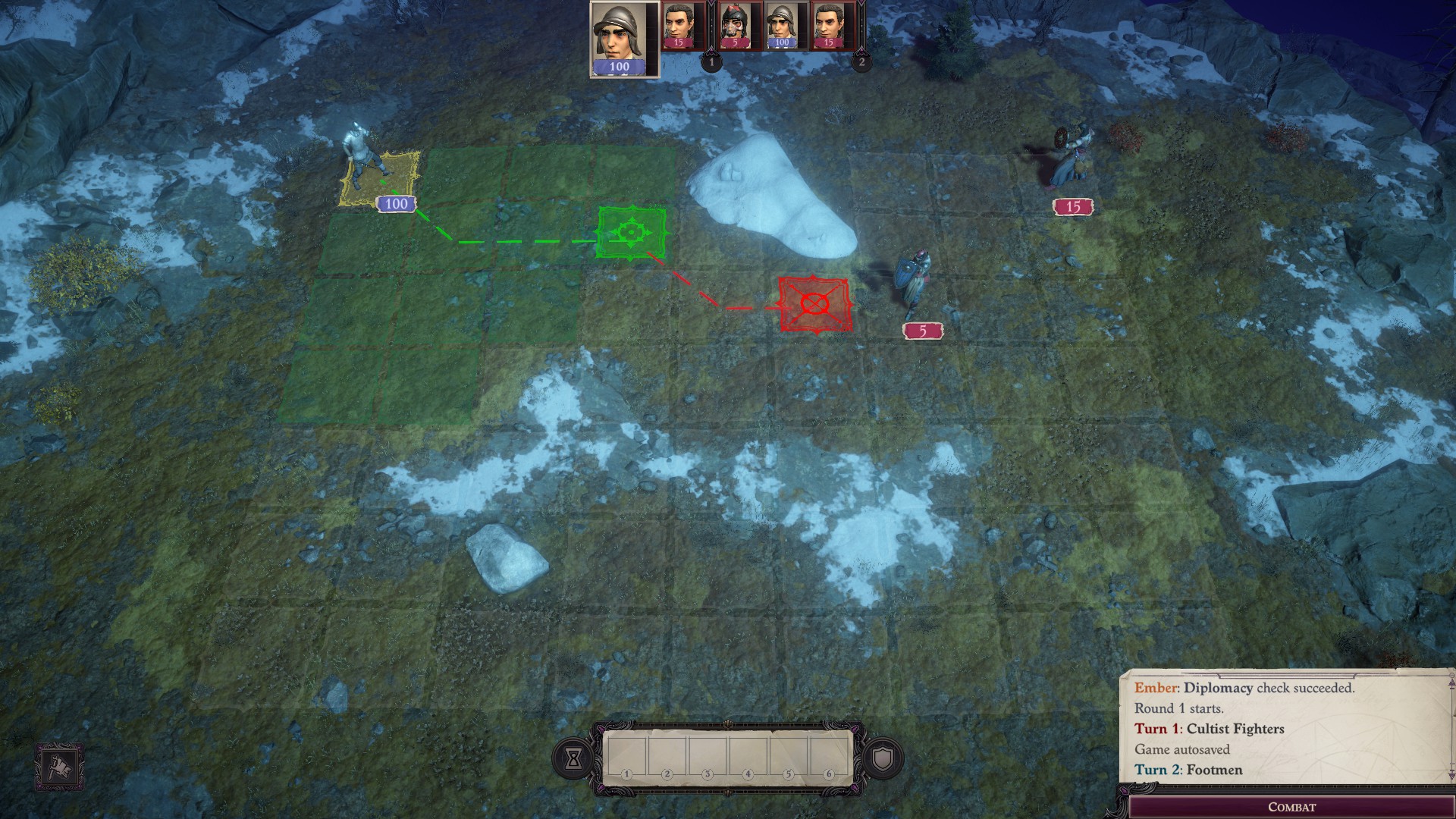
Once you progress past act I, (yes, the game is divided into acts) you also get access to combat involving a crusade. These are turn-based exclusively, but they take place on the same map that your normal party will be moving around on. Things aren’t too hard here, you get a general that has special powers and can’t die, and you’re trying to kill the enemy units before yours completely deplete.
Now, this game isn’t without bugs. A game this massive has to, statistically, have a few things wrong with it, and for the most part this didn’t bother me. Or, y’know, bug me! The occasional portrait was missing when it shouldn’t have been, items in my inventory were called things they shouldn’t have been, sometimes areas wouldn’t load fully- but this was all mostly tolerable. Something that was actually frustrating to me seemed to be an intentional gameplay mechanic: some plot and recruitment beats are timed, without you fully being told they are. I missed out on an entire group of people to assist me with an important story quest, as well as a party member simply because I did one quest before I sought that group out. While it feels like the game wants you to explore as much as you can, sometimes that exploration also comes back to bite you in unexpected places.
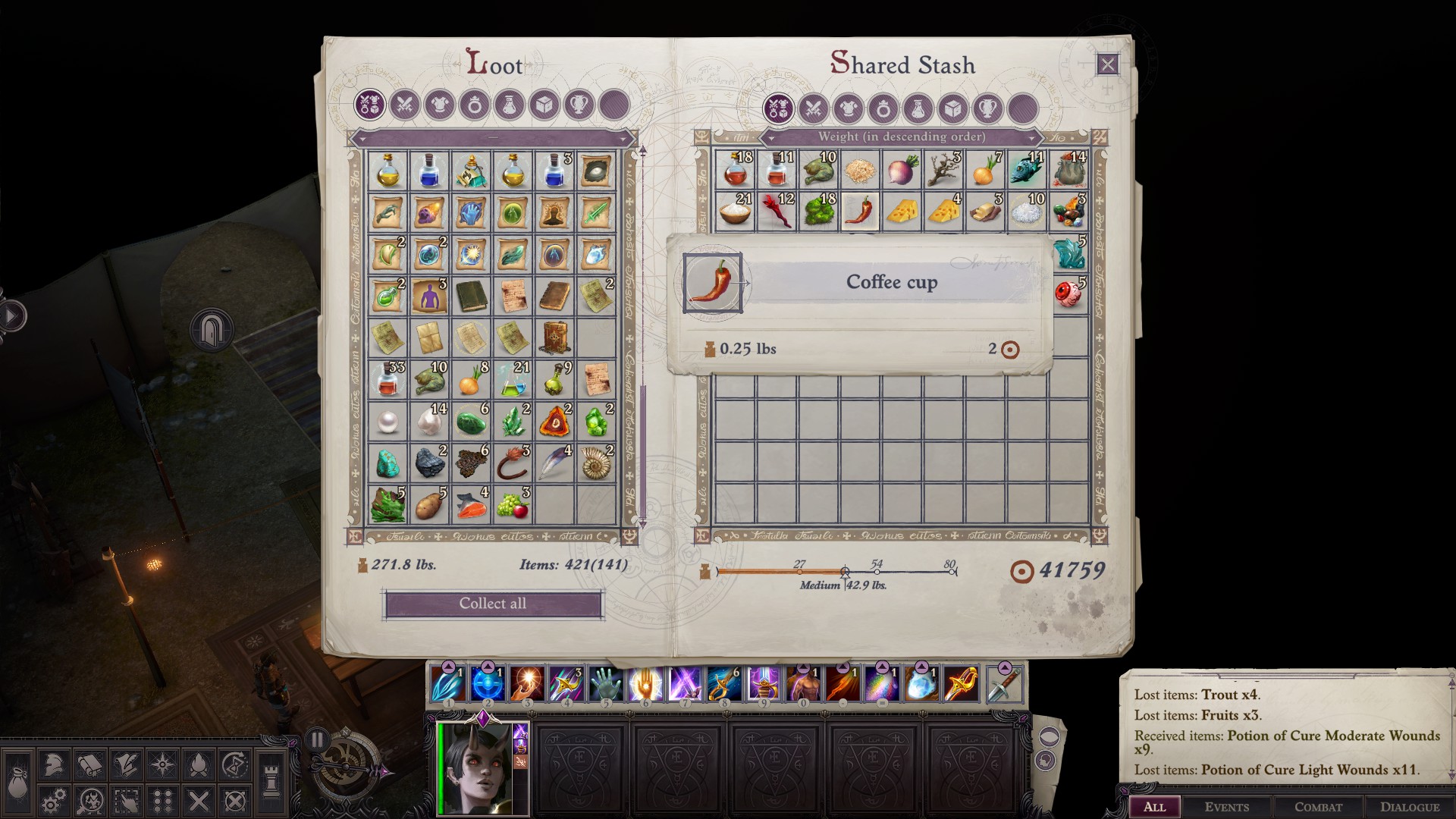
For the most part, if you’re familiar with Pathfinder, D&D, or other tabletops with a fantasy setting and skill-driven actions, you’ll be able to suss out how certain mechanics in the game work. The game also does a damn good job of explaining it to you with pop-ups when there’s a new mechanic involved. It’s a D20 roll to do almost anything, based on attributes you’re able to level up or get equipment boost to improve. You use perception to see traps and hidden things, Athletics helps you lift things that are heavy, like crumbled walls and buildings, you can sway minds and conversations with persuasion, and so on. If you play a spellcaster, you get to customize your spells- provided you’re arcane- otherwise you prepare them and then rest to activate your spells.
Finally, the biggest mechanic that sets this game apart from its predecessor for me, is the new mythic paths option to the player. As you navigate the game and select certain actions and speech options, you’ll sometimes see text about a particular path, such as the angel path. When you select these options, you effectively begin the unlock process. There are a few that you need to pick things up to fully initiate, or save the right people to begin, and things like that, but a good handful of these paths are handed to you. Once you reach a certain point in the game, you gain a mythic hero level, and by the time you hit level 3, you get to select your true mythic path. Each party member you have also gets mythic skills, and there are plenty of these to choose from, allowing individual customizability.
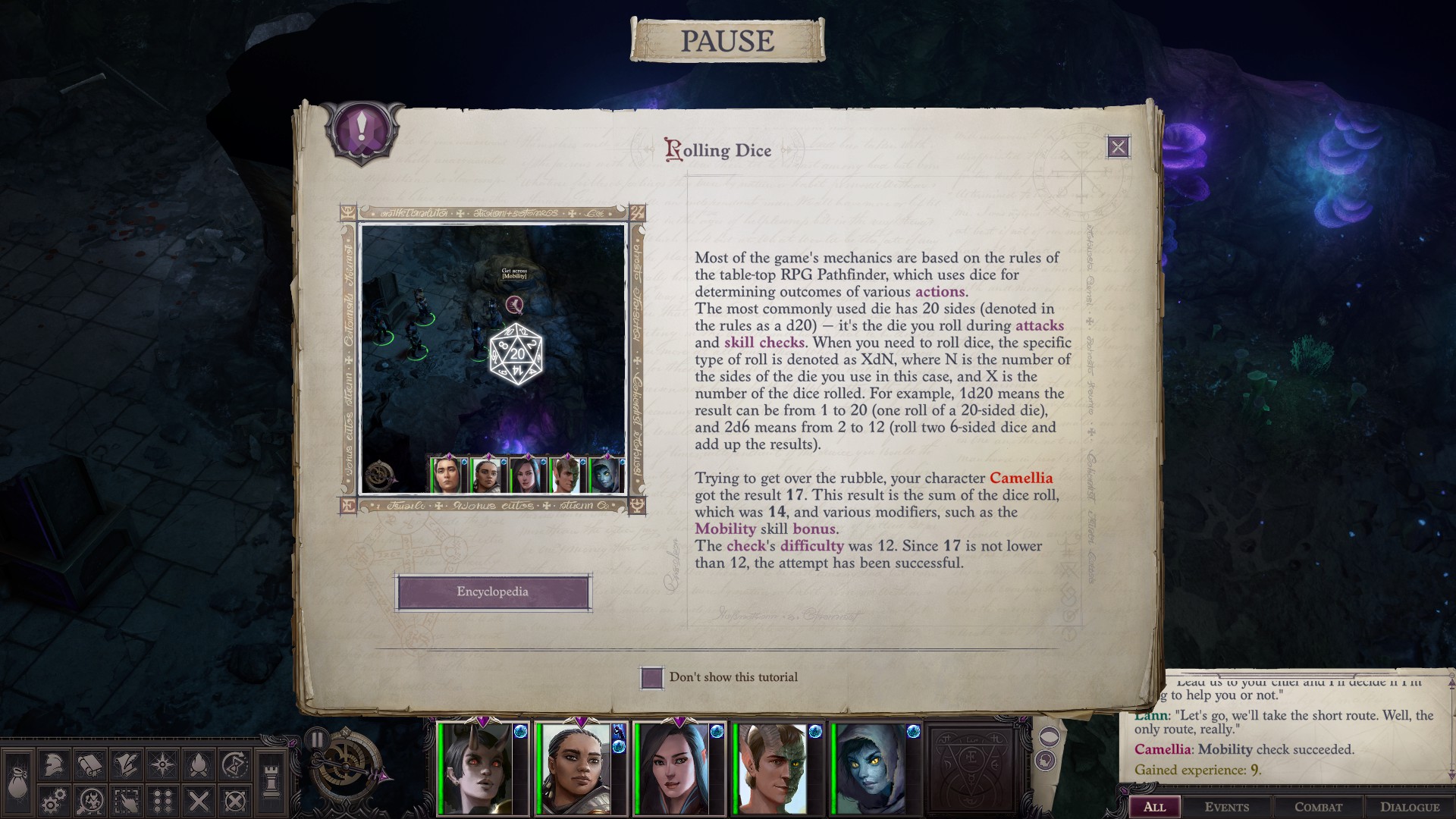
The Azata path was my pick, because I love Chaotic Neutral options, and I wanted to be a super hero really, really bad.
Verdict
The potential chronal investment one makes by beginning this game is nothing to sneeze at. There’s so many variables, options, and things to experience that it’s enough to make anyone’s head spin, particularly if you’re the completionist sort. Still, this is one of my favourite CRPG’s I’ve ever played, and the replay value is immense, considering how much I missed in my first playthrough alone- and that’s with more still to go!
I played a good aligned character, and the evil options I saw seemed somewhat limited, but I haven’t delved into that yet. As someone who loves tabletops, character choices, customization, party diversity, fantasy immersion- and pretty much just everything about this game, some of the places it falls short are easy to overlook. Especially since they’re few and far between considering the depth of content available.

